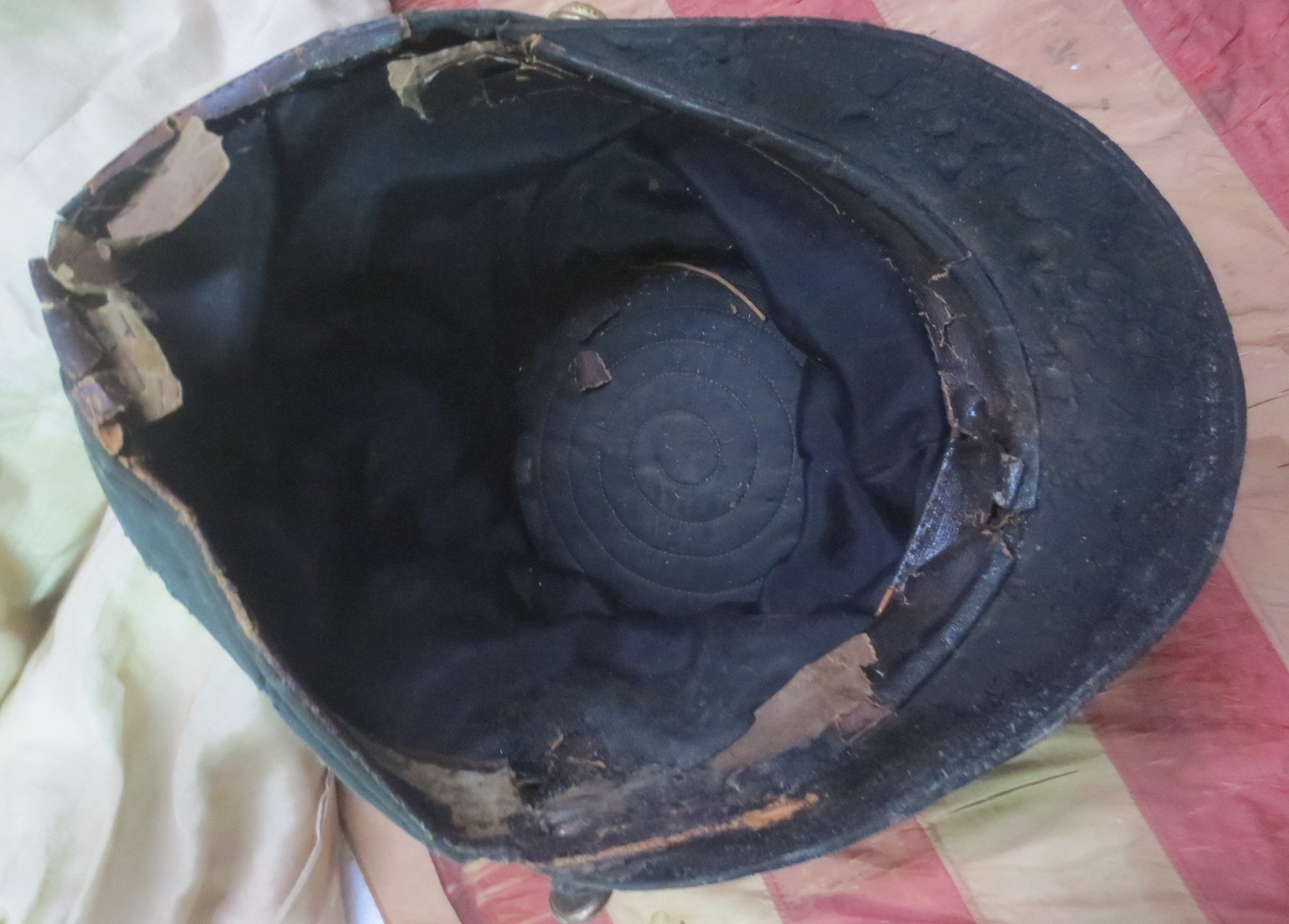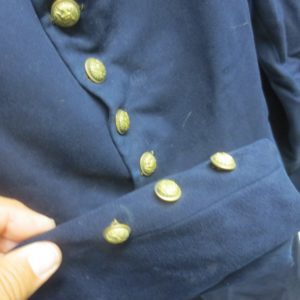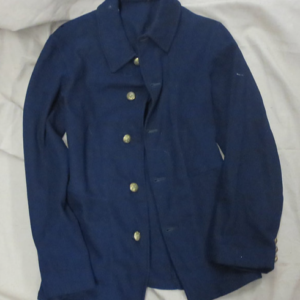Description
This is an original Civil War kepi as worn by Capt. Bernard O’Reilly who served in Company E of the 164th New York Infantry. It surfaced in an estate auction in New Jersey along with his frock coat several years ago. The kepi has been conserved as it suffered from insect damage. The cap is a greenish tint in color but could be a color change due to breakdown of the fabric dye or it may have actually been a green tinted blue, as he was VERY Irish!
Capt./Major Bernard O’Reilly
Residence was not listed; 22 years old. Enlisted on 8/29/1862 at New York City, NY as a Captain. On 8/29/1862 he was commissioned into “E” Co. NY 164th Infantry. He was Mustered Out on 7/15/1865 at Washington, DC
He was listed as:
* POW 8/25/1864 Reams’ Station, VA
* Returned 4/9/1865 (place not stated)
164th (One Hundred and Sixty-fourth) Infantry.-Cols., John E. McMahon, James P. McMahon, William DeLacey; Lieut.-Cols., James C. Burke,
William DeLacey, John Beattie; Majs., Michael D. Smith, John Beattie, Bernard O’Reilly.
This was one of the four regiments forming the brigade of Irish soldiers known as the Corcoran Legion. The 164th was recruited
in New York, Brooklyn, Buffalo, and the counties of Niagara and St. Lawrence, and was mustered into the U. S. service at Newport
News, Va., Nov. 19, 1862, for three years. Col. John E. McMahon was one of three brothers, all of whom became colonels. He succumbed to disease in March, 1863, and was succeeded by his brother, James P. McMahon, who was killed in action at Cold Harbor. Lieut.Col. DeLacey had formerly rendered
gallant service as major of the 37th N. Y. He was wounded several times and rose to the rank of brevet brigadier-general.
Col. Fox, in his account of this splendid fighting regiment, says: “The Legion was ordered to the Peninsula soon after, where
it was placed in the 7th corps. On Jan. 29, 1863, the brigade started on the Blackwater expedition (Gen. Corcoran commanding
the division), during which it saw its first fighting, at the affair known as the Deserted House.
The gallant behavior of the Legion in this engagement elicited a general order from department headquarters which was highly
complimentary to the command. In April, 1863, it was actively engaged in the siege of Suffolk. Gen. Corcoran commanded the
Legion up to the time of his death, which occurred at Fairfax, Va., Dec. 22, 1863.
From July, 1863, until May, 1864, the Legion was stationed near Washington, after which it joined Grant’s army at Spottsylvania,
where it was assigned to Gibbon’s (2nd) division, 2nd corps. At Cold Harbor it was in the assaulting column, and succeeded in
carrying the portion of the enemy’s works in its immediate front, but with a heavy loss in men and officers.
Seven officers of the regiment were killed in that assault, including Col. McMahon, who was shot down after having with his
own hands planted the regimental colors on the Confederate works. The regiment, however, was obliged to fall back, owing to the
failure at other points of the line, having lost 16 killed, 59 wounded and 82 missing. The Legion was commanded at
Spotsylvania by Col. Murphy (182nd N. Y.), who afterwards fell mortally wounded at Dabney’s mill. The casualties in the
regiment at Spotsylvania were 12 killed, 66 wounded and 44 missing.”
The regiment suffered severely in the first assaults at Petersburg, where its losses amounted to 63 killed and wounded,
chiefly incurred during the assault of June 16. It was present at Deep Bottom and Strawberry Plains, and was again hotly engaged
at Reams’ station with a loss of 9 killed and mortally wounded, 1 wounded, 9 officers and 98 men missing or captured From June 26,
1864, until the close of the war, the Legion, together with the 8th N. Y. heavy artillery, made up the 2nd brigade, 2nd division,
2nd corps.
It was in the action on the Boydton road, losing 7 men; at Hatcher’s run in December, and closed its active service with the
Appomattox campaign in 1865, fighting at White Oak ridge, fall of Petersburg, High bridge, Farmville and Appomattox. It was
mustered out near Washington, under Col. DeLacey, July 15, 1865.
The total enrollment of the regiment was 928, of whom 10 officers and 106 men-or 12.5 per cent.-were killed and mortally wounded; 3
officers and 126 men died of disease and other causes; total deaths, 245, of whom 2 officers and 84 men died in the hands of
the enemy.









